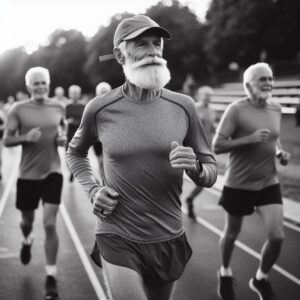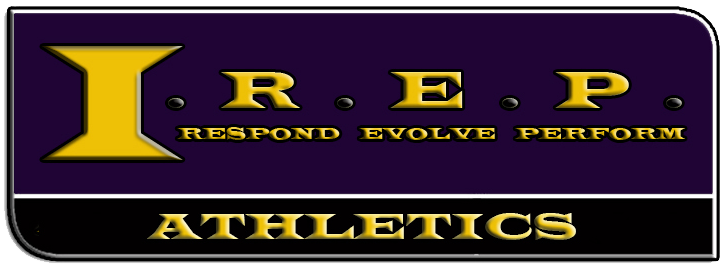Over time, athletes often see a decrease in maximum heart rate and cardiac output. The body’s ability to transport oxygen to working muscles diminishes, which may lead to longer times to complete training sessions or races. Adapting training to include cardiovascular exercises that boost heart health and function can help mitigate some of these changes.
Aging is associated with a reduction in muscle cross-sectional area and conversion of fast-twitch muscle fibers, which are important for power and speed, to slow-twitch more endurance-oriented fibers. While this transition may seem beneficial for endurance sports, the overall loss of muscle can result in decreased strength and endurance capacity. Resistance training can help maintain muscle mass and functional strength, which are key for ironman training.
Flexibility often decreases with age, making muscles and joints feel stiffer and less accommodating to the wide range of motion required for efficient swimming, cycling, and running. A loss of flexibility can lead to a less effective and more injury-prone athletic form. Including specific flexibility and mobility exercises in one’s training regimen becomes increasingly important to maintain a good range of motion and prevent injuries.
The efficiency of metabolic processes, including how quickly the body converts nutrients into energy, changes. This shift impacts endurance, the ability to maintain intensity during long training sessions or races, and how quickly the body recovers afterward. Older athletes may need to adjust their diet and include more rest within their training plans to account for these metabolic shifts.
One of the most noticeable changes as athletes age is the lengthened recovery period required after intense physical activity. The body’s reparative systems slow down, making it more challenging to rebound from strenuous workouts. Extended recovery times necessitate modifying training intensity, volume, and rest days to prevent overtraining and injury while still maintaining fitness.
Tailoring Ironman Training for Mature Athletes
It’s necessary to find the right balance that allows for maintaining endurance and fitness while not overwhelming the body. Training plans may shift toward increased low-intensity steady-state (LISS) workouts, which can enhance cardiovascular fitness without the high stress of high-intensity interval training (HIIT). Volume should also be scrutinized. Focus on the quality and purpose of each session.
 With the increased recovery time needed by mature athletes, a training plan should be as much about recovery as it is about the actual workouts. Recovery-focused training incorporates adequate rest days and employs a ratio of hard training days to easy rest days that allow the body ample time to recuperate. This may mean incorporating more active recovery days where the workout is of very low intensity and aimed at promoting blood flow and recovery without inducing fatigue.
With the increased recovery time needed by mature athletes, a training plan should be as much about recovery as it is about the actual workouts. Recovery-focused training incorporates adequate rest days and employs a ratio of hard training days to easy rest days that allow the body ample time to recuperate. This may mean incorporating more active recovery days where the workout is of very low intensity and aimed at promoting blood flow and recovery without inducing fatigue.
Emphasis should be on functional movements that simulate the actual movements of swimming, cycling, and running. Core strengthening is especially important as it supports proper form and reduces the risk of injury by ensuring a stable foundation for endurance activities.
Incorporating regular stretching and mobility work into the routine becomes a necessity. These exercises help maintain the range of motion important for efficient movement patterns during swimming, biking, and running. Yoga or Pilates could be integrated into the training schedule to support flexibility, balance, and body awareness.
Aging athletes should focus on fine-tuning their technique in each discipline of the Ironman. Efficiency in stroke, pedal technique, and stride can reduce the energy cost of movement and the stress placed on joints, which is especially valuable when the body can no longer withstand the same level of strain as it used to.
Mature bodies require more time to process nutrients, or they may experience changes in digestive efficiency. A nutrient-dense diet with adequate protein intake is necessary for muscle repair and maintenance. Proper hydration before, during, and after workouts remains vital as the sensitivity to dehydration can increase with age, and its effects can be more pronounced.
Implementing Strategic Recovery Techniques
Mature athletes should strive for recommended sleep durations, which for most adults means 7-9 hours per night. It’s beneficial to maintain a regular sleep schedule to help regulate the body’s internal clock, improving the quality of that sleep.
Post-training nutrition is necessary for replenishing glycogen stores and providing the necessary building blocks for muscle repair. A focus on protein intake is vital, as it helps in the repair of tissue that is damaged during rigorous workouts. Carbohydrates are also important to restore energy levels. Including anti-inflammatory foods in the diet can also aid in reducing the recovery time by mitigating muscle soreness.
Implementing low-intensity activities on the days following vigorous workouts can enhance recovery by increasing blood flow to muscles without placing significant stress on the body. Activities like leisurely swimming, easy cycling, or a gentle walk can aid in this process. Active recovery helps to clear waste products accumulated from strenuous exercise while delivering nutrients that aid in repair.
Incorporating daily stretching or mobility routines aids in maintaining flexibility and can alleviate post-exercise soreness. By enhancing joint range of motion, these practices can prevent the stiffness and immobility that sometimes plague mature athletes.
The use of cold therapy, such as ice baths, can reduce inflammation and soreness after intense exercise sessions. Heat therapy, like a warm bath, can soothe and relax tight muscles. Alternating between hot and cold treatments can be particularly effective by creating a pump mechanism, flushing out and then infusing muscles with fresh blood.
Wearing compression garments post-exercise can help reduce muscle swelling and fatigue. These garments work by applying pressure to specific body parts, which can theoretically enhance blood circulation and support muscle recovery.
Techniques such as foam rolling can help release muscle tightness and trigger points that develop over time. This self-myofascial release can improve blood flow and enhance mobility, important for ongoing training effectiveness.
Mental exhaustion can be just as debilitating as physical fatigue. It’s important to include psychological recovery strategies, such as meditation, deep-breathing exercises, or simply engaging in relaxing activities that shift focus away from training.
